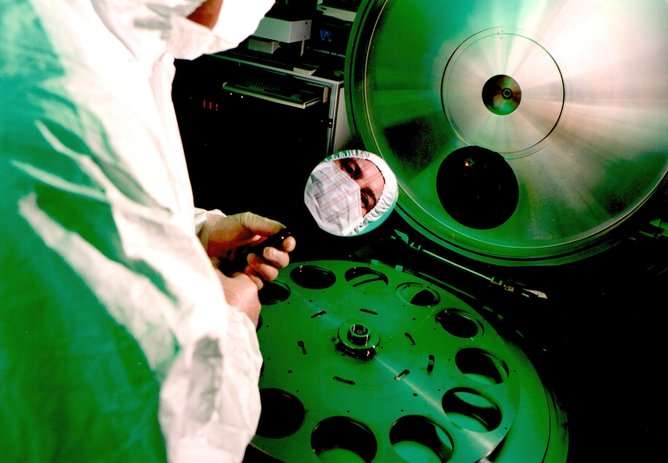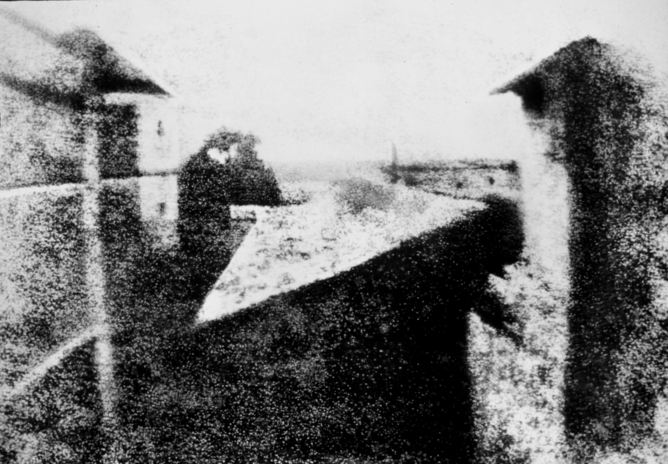From microchips to moon rocks—how the world depends on counting atoms

What do ancient artefacts, fragments from celestial bodies, microchips and have in common? Their innermost secrets can all be unveiled with the same method. (RBS) uses a beam of charged particles to analyse their composition by counting the atoms in .
But now RBS is even better, having been and the University of Surrey now has the first laboratory for . This may sound like a small, technical step, but it is a leap that could have huge returns.
Reliable atom counting
was the first to explain, in 1911, that atoms are made up of heavy nuclei surrounded by orbiting electrons. He was amazed to see alpha particles (the nuclues of a helum atom) bounce backwards ("backscattering") after reacting with the electrons in an ultra-thin gold foils. But he also solved the physics, finding an elegant formula for how the alphas scatter. Essentially, RBS counts how many atoms of the various elements are present in a thin-film.
RBS is now a standard tool for chemical analysis. For example, it was famously used by in to analyse the composition of rocks from the moon during the mission. RBS is always accompanied by , that is, of the elements in the target. RBS plus this X-ray emission is known as .
Turkevich claimed 1% accuracy for his RBS measurements. So if he measured a thin-film thickness of 100nm (nanometres), his uncertainty would be less than 1nm. However, in the 50 years since Turkevich's claim only very careful analysts did better than 5%. But now we know how to reliably measure accurately.

Ion beam analysis was also used recently to discover and to determine the of famous artists. At the Louvre Museum in Paris they have an dedicated to ion beam analysis of art treasures.
'Doping' microchips
The electronic magic going on in the ultra-thin surface layers of microchips is at the heart of nearly all the technology we see around us today. An important part of it is , a way to directly manipulate the electronic behaviour of a material by implanting ions (atoms or molecules that have lost one or more of their electrons) into it.
An ion implanter typically consists of an ion source, an accelerator that boosts the ions' energy and a target chamber where the ions are implanted into the material. Implanting a few arsenic atoms here and a few boron atoms there into a silicon wafer forms the array of transistors that become the brains of "silicon chips".
Ion implantation is one of the basic technologies that underlie the huge industry. This is because ion implantation is very controllable (electrical current is easy to measure): essential since all the millions of transistors have to work the same in all the millions of chips.
It is easy to see that a basic technology needs to have good independent methods of double-checking: counting atoms accurately is important but it's hard to do. Now we can double-check the implanted ions counted in using .
Non-destructive analysis
We have demonstrated that RBS qualifies as a . This is the way talk about the really accurate measurement methods that everything else depends on. There are not that many primary reference methods: the link lists "", "" and "", but none of these are methods that are non-destructive like RBS: Rutherford's gold foil remained unscathed.
A non-destructive measurement of a sample is important as it allows further measurements to be made – or you may simply want your sample back. An interesting example of a type of analysis that has only fairly recently become feasible was done on one of the treasures of the Louvre. The first ever photograph was taken by in 1827 (pictured above), but it had started to get worrying signs of corrosion. By we were able to find out how the corrosion was occurring: tin was oxidising to a depth of about 12 microns and causing the problem.
Whenever scientists improve techniques, new things (such as ) or new understandings (of for example) change the world. These surprisingly different examples depended on accurate RBS, and the future will certainly see applications in many different fields.
Source: The Conversation
This story is published courtesy of (under Creative Commons-Attribution/No derivatives).
![]()



















